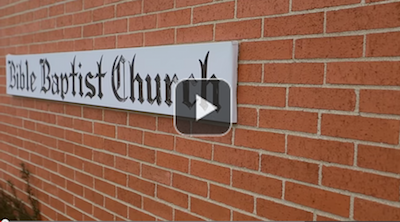FEBRUARY 14, 2016
THE RISEN SAVIOR AND THE GREAT COMMISSION
INTRODUCTION:
1. In these verses we have abundant proof that our Lord Jesus Christ really rose again from the dead. In this one passage, Mark records no less than three distinct occasions on which He was seen after His resurrection. First, he tells us, our Lord appeared to one witness, to Mary Magdalene; then to two witnesses, two disciples walking in the country; lastly, to eleven witnesses, the eleven apostles all assembled together.
2. Let us remember, in addition to these, many other appearances are described by other New Testament writers. (See I Cor. 15:5, 6) This essential truth of the Christian religion has been well attested. No fact of history has been more thoroughly established than that Jesus Christ rose from the dead. We ought to thank God that the fact of the resurrection is so clearly established. The Jews, the Gentiles, the priests, the Roman guard, the women who went to the tomb, the disciples who were so backward to believe, are all witnesses whose testimony cannot be gainsaid.
3. There is a great mercy in this. The resurrection of Jesus Christ is one of the foundation stones of Christianity. It was the seal of the great work that He came on earth to do. It was the crowning proof that the ransom He paid for sinners was accepted, the atonement for sin accomplished, the victory won over death, hell, and the grave.
4. The upbraiding that the disciples received from the Lord for not immediately believing the report of His resurrection was well-deserved. Yet, the manner and circumstances of their being convinced would serve to establish in them the unshakeable conviction of a risen Savior.
I. THREE APPEARANCES OF THE RISEN CHRIST. (VERSES 9-14) The Lord had repeatedly explained to His disciples what His mission was in coming to Jerusalem. (Matt. 16:21-28; 20:18, 19; Mark 8:31ff; Luke 9:22-27) He had clearly told them that He would be killed and be raised again the third day. This prediction was not a household secret, as is obvious from what the Pharisees said to Pilate after His burial. “We remember that that deceiver said, while he was yet alive, after three days I will rise again.” (Matt. 27:63) Why then were the disciples so backward to believe the reports of, first one, then two eye-witnesses to whom He made appearances? Another question that begs an answer is why were the first witnesses themselves seemingly oblivious to what they saw and heard, at least at first. The answers to these questions are given us. (Luke 9:45; 24:16; John 20:9, etc.) Still, as for why these things were hid from them, we are not told. We do know, however, that the condition remained until the Lord Himself opened their understanding that they might understand the Scriptures. (Luke 24:45; see also Luke 24:25-27, 44-48) Perhaps this helps to explain the strange reaction to the following reports from these to whom He appeared.
A. CHRIST’S APPEARANCE TO MARY MAGDALENE. (VERSES 9-11)
1. It seems that she was the first to see Him alive, certainly the first to whom He appeared. This was itself an honor bestowed by the risen Christ upon this woman. In this, He honored women generally, but especially this dear redeemed soul, who was called from a life of scarlet sin; snatched from the miserable domination and deadly grip of seven devils.
a) How thoroughly Christ cleanses and forgives sinners! Her former life was gone, and so was his remembrance of her past uncleanness.
b) How grateful was this dear woman for sins forgiven! She expressed her sincere gratitude in practical acts of service and devotion. (Luke 8:2, 3) Her coming to the tomb at this time was yet another expression of her great love. Jesus would say that she loved much because she had been forgiven much. (Luke 7:47)
c) Coming to the tomb after three days expecting to find Christ’s body within was itself an indication of her unbelief. The angel had said to her, “He is not here, he is risen, AS HE SAID.” (Matt. 28:6 – emphasis added) Jesus nevertheless acknowledged her great love by allowing her this most extraordinary honor.
2. Mary bore the glorious news to the place where the disciples were gathered, expecting to break through the gloom and turn their sadness into joy. There is no better cure for sorrow than the knowledge of a risen Savior; however, they would not be comforted, for they refused to believe her report.
B. CHRIST’S APPEARANCE TO TWO DISCIPLES AS THEY WERE WALKING IN THE COUNTRY. (VERSES 12, 13)
1. This appearance is without doubt that which Luke records much more fully in his gospel. (Luke 24:13-31) We have there the amazing story about the exchange between Christ and two disciples on the road to Emmaus.
2. He is here said to have appeared to them in another form, perhaps not in His ordinary apparel. Mary mistook Him for the gardener. (John 20:150 Luke says of the Emmaus road disciples, that “their eyes were holden, that they should not know him.” This would suggest that His countenance was not changed, but they were prevented somehow from being able to recognize Him.
3. These two witnesses, being satisfied in themselves that it was indeed Christ who appeared to them, went and told the gathered disciples.
4. Their witness was not believed any more than was Mary’s. “…neither believed they them.”
5. Again, we must ask why this strange providence? Why were they so hard to convince of the reality of a matter of which Christ had told them, and was so important to the faith? One thing is certain, when those who were so slow to believe became convinced of this truth, it added much weight to their own witness when they began to declare and defend it, and were even willing to die for it.
C. CHRIST’S APPEARANCE TO THE ELEVEN. (VERSE 14)
1. Christ came in person to the place where the disciples were. He stood in their midst and He ate with them. (See Peter referring to this particular detail at the house of Cornelius in Acts 10:41)
2. And still, when He appeared to them, He upbraided them with their unbelief and hardness of heart, for even then some doubted. (See Matt. 28:17)
3. And though they had not seen Him for themselves until now, they still deserved to be upbraided for rejecting the true witness of Mary and the Emmaus disciples. The evidences of the true Gospel are so full, that those who receive it not are justly upbraided. There is no deficiency in the proofs; unbelief is due to hardness of heart.
4. It was not until the Lord opened their understanding that they might understand the Scriptures that they truly believed. This is always the case. True faith is not based upon physical proofs or natural influence, but it rather comes by the Word of God ministered by the Holy Spirit.
II. THE COMMISSION WHICH THE RISEN CHRIST GAVE TO THE ELEVEN. (VERSES 15-18)
A. THE COMMISSION WAS TO PREACH THE GOSPEL TO ALL THE WORLD. (VERSE 15)
1. Thus, they were to set up His Kingdom among men by the preaching of the Gospel.
2. They are no longer sent to the lost sheep of the house of Israel, but to all the world, to every creature, regardless of race, color, or creed.
3. These eleven men could not themselves fulfill such a commission, but as founders of the church, they would establish that which by the power and direction of Christ would reach the whole world with the Gospel. This little group was as the tiny seed that would produce a great tree whose branches would reach out to all the world. (Matt. 13:31, 32) It was like unto the leaven which spreads throughout and permeates the whole loaf. (Matt. 13:33)
B. THE ETERNAL STATE AND DESTINY OF ALL MEN DEPENDS UPON HOW THEY HEAR THE GOSPEL. (VERSES 16)
1. Those who repent and believe the Gospel shall be saved. “He that believeth and is baptized shall be saved.” That is, he that so believes as to turn from sin to Christ, who willingly confesses himself to be a follower of Christ, shall be saved. Christ does not commit Himself to secret disciples.
2. Those who reject Christ and the Gospel and believeth not, shall be damned.
C. THE APOSTOLIC POWERS OF CONFIRMATION FOR THE GOSPEL THEY WERE TO PREACH. (VERSES 17, 18)
1. Not that all of these signs were produced in all who believed, but rather in those who were employed in propagating the faith.
2. We find examples of some of these confirming signs in the early church in the New Testament. Of others, some instances are taken note of in early church history as having occurred. For example, we have no record in the New Testament of anyone surviving ingesting deadly poison given them by enemies of the Gospel; however, early church history confirms that such a thing did on occasion occur.
III. THE ASCENSION OF CHRIST BACK TO THE FATHER IN HEAVEN. (VERSES 19, 20)
A. HE WAS RECEIVED UP INTO HEAVEN. (VERSE 19)
1. All of the heavenly world welcomed Him home.
2. He was especially received by God the Father.
3. He ascended to His place of power, authority, and mediation.
a) He is there as the God-man.
b) He has received His mediatorial office.
c) This place of authority and office He earned through His incarnation and redeeming work. (Phil. 2:5-11)
B. HE IS RECEIVED ALSO IN THE WORLD BELOW. (VERSE 20)
1. Part of the great mystery of godliness is that Christ is both believed on in the world, and received up into glory. (I Tim. 3:16)
2. Through the preaching of the Gospel, Christ is believed on, and received into the hearts of men.
3. Jesus promised that in going away, i.e. back to heaven, He would be sending the Holy Spirit, so that in this work He would be with us always, even to the end of the age. (John 14:16, 17, 26; 16:7; Matt. 28:18-20)



Speak Your Mind